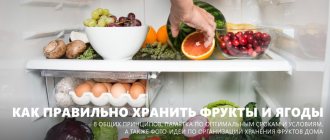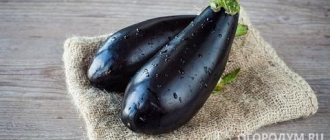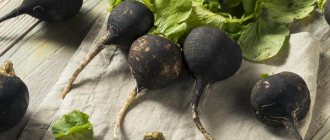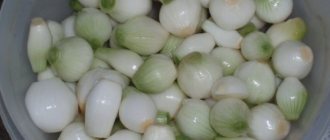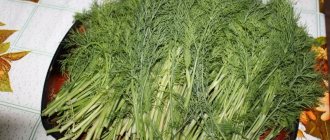Tomatoes are a favorite vegetable for many, used as the main component of salads and as an addition to hot dishes. At the end of the season, I really want to find the best way to store tomatoes so that they remain juicy and tasty longer. In our article we will talk about how to properly preserve the harvest of ripe tomatoes at home, and also talk about storing green fruits at the ripening stage.
You can store both ripe and unripe tomatoes at home.
Which varieties are suitable for long-term storage?
Storing tomatoes at home is not difficult. Under the right conditions they can stay fresh for a very long time. However, not all varieties of vegetables are suitable for this.
If you want to eat fresh tomatoes in winter, specifically plant late-ripening plants. Early and middle varieties finish fruiting very quickly and will not be able to survive until the cold weather. Harvesting of late-ripening tomatoes continues until frost.
Among the many such varieties, choose those that produce fruits with dense pulp and thick skin. These are mainly oval-shaped tomatoes intended for mechanical harvesting. They contain little juice, tolerate transportation well, and are less damaged by rot and disease.
From a botanical point of view, a tomato is a berry, but is cultivated as a vegetable crop
But shelf life is not the only criterion when choosing a variety. Tomatoes should also be tasty. Do you agree?
Refuse the selection varieties of the last century, give preference to new products, and you will be pleasantly surprised. There are 2500 varieties in the register and only a few of them are stored for a long time and have excellent taste:
- Aisha – retains high commercial qualities and excellent taste for a long time;
- Astona - shelf-stable fruits up to 160 g with excellent taste;
- Bonus - 100 gram fruits are stored in excellent condition for up to 4 months;
- Dragoon - the fruit is only 50-60 g, but light and tasty;
- Ermak - the fruits are not large (up to 100 g), but the keeping quality and taste are excellent;
- Pedro are large tomatoes (up to 170 g) and are perfectly stored;
- Snowfall - the fruit weighs up to 70 g, and will definitely last until the New Year holidays.
In winter, you can plant both ripe tomatoes and milky or blanzhe ripeness. Completely green fruits do not ripen well in storage conditions and often spoil and rot. Therefore, when choosing seeds for planting, consider the climatic conditions of your region.
If late varieties do not have time to pour, you should discard them and give preference to mid-season varieties. But then it’s unlikely that you’ll have your own fresh tomatoes on your New Year’s table. [flat_ab id=”24"]
Do you know that…
There is an opinion that tomatoes grown in garden beds last longer than their greenhouse counterparts. The reason supposedly lies in different agricultural technologies and growing conditions. But in fact, the only criterion for keeping quality is the variety, and the place of cultivation does not matter.
Storage methods and conditions
Tomato is an amazing product. Its fruits contain many useful substances, vitamins and minerals, which are preserved in almost unchanged quantities during storage and processing.
Lycopene (the most powerful antioxidant) contained in tomatoes is absorbed into the body after heat treatment of fruits with fats
There are many options for saving this product. Each housewife chooses her own way to store tomatoes at home:
- put into storage fresh;
- dry and wither;
- freeze;
- preserve.
Fresh fruits are of particular interest. But they are very demanding on storage conditions, violation of which can lead to rapid deterioration of the product.
The ideal conditions for tomatoes are:
- air temperature – 8-11 °C (for ripe fruits), 13-20 °C (for milky ripe fruits);
- air humidity –90-95%;
- access to fresh air;
- complete absence of light.
In a private house, such conditions can be created in the cellar, basement, garage or veranda. In an apartment, fresh tomatoes can be kept on an insulated balcony, in a vestibule or in a cold storage room.
Tip of the day
Do not wash fruit before storing. Wash off the protective layer, and the tomatoes will quickly rot.
How long can tomatoes be stored?
The shelf life of tomatoes largely depends on the chosen storage method, as well as on the degree of ripeness of the fruit.
The stalk preserved during harvesting will increase the shelf life of the fruit.
Fresh ripe tomatoes without additional processing will last less than green ones. But their taste will fully correspond to summer products, which is a prerequisite for many.
Find out how to store green tomatoes so they turn red quickly or, conversely, last longer.
Temperature and humidity levels in home storage are rarely constant. Therefore, creating an ideal microclimate that would ensure long-term storage of tomatoes is quite difficult. As a result, shelf life indicators can vary greatly.
Approximately refer to the following expiration dates:
- red tomatoes in storage – up to 3 months depending on the variety;
- frozen by household methods - 6-8 months or until defrosted;
- sun-dried tomatoes – 4-8 months;
- canned fruits under iron lids - up to 2 years.
Tip of the day
If you have a large harvest of tomatoes, try different ways of preparing them for the winter. This will make it possible to use the product longer. And even if you have a bad experience, you won’t find yourself without your favorite tomatoes.
Valuable advice from experienced gardeners
In order not to ruin the entire crop, during storage you must adhere to simple rules:
- Once every 7 days you need to check the fruits for rot and mold.
- To extend shelf life, each specimen is wrapped in paraffin or Vaseline.
- For quick reddening, straw and ripe tomatoes are placed in the box. Bananas will also work.
- An intact stalk is the key to long storage.
- Before placing in boxes, each fruit is wiped with alcohol. This will preserve freshness and aroma.
- Only those vegetables that are grown in open beds are subject to long-term storage.
- Onion peels placed in boxes with tomatoes will help prolong freshness.
- To disinfect the boxes, they are treated on all sides with alcohol and dried thoroughly.
Methods for storing fresh tomatoes
There are several options for storing fresh tomatoes at home.
Due to different ripening periods and shelf life, different varieties of tomatoes should be stored separately from each other.
In boxes
The easiest way to keep tomatoes is in small plastic or slatted boxes. Containers for storing food must be clean and dry.
- Remove healthy, strong, undamaged fruits from the bushes when the daytime air temperature drops to 8-10 °C, but there are still no night frosts.
- Harvest in dry weather during the day, when the dew has disappeared from the plants. The tomatoes must be dry.
- Sort the fruits by size, degree of ripeness and put them in boxes in 2-3 layers.
- You can sprinkle them with dry peat, hay, straw, sawdust, onion peels, perlite or vermiculite (see “5 reasons to use perlite and vermiculite for winter storage of vegetables, fruits, rhizomes, tubers and bulbs”). With the last two fillers, tomatoes are stored for an especially long time.
Throw away rotten fruits from the boxes immediately, they can cause damage to the entire harvest.
Tip of the day
Some people recommend wrapping tomatoes in paper. You shouldn't do that. If the fruit begins to rot, you will not be able to notice it in time, and it will become a breeding ground for infection.
In jars with mustard
There is a way to keep tomatoes fresh in jars. For this:
- Select ripe, firm fruits, wash them and dry them.
- Pour a little mustard powder into a sterile, dry 3-liter jar, and then place the tomatoes loosely.
- Add preservative as the container fills. In total you will need 5-6 tbsp. l. mustard.
- Roll up the jars and store them in a cool place.
This option can be used both in an apartment and in your home. It's very simple, and most importantly - convenient.
We answer the question: is it possible to preserve fresh tomatoes under vacuum lids?
This is something from the realm of myths. It is not possible to create a complete vacuum at home. And anaerobic bacteria (for example, botulinum) develop even better in the absence of air. And the condensation released by the fruits will not go away.
Although you can try preparing one jar like this as an experiment. Please share your results in the comments.
Ripening
Tomatoes of varying degrees of ripeness without damage are suitable for ripening. This process will allow you to extend the period of eating fresh tomatoes for another couple of months.
Regulating the temperature in the storage will speed up or slow down the ripening of vegetables
The speed of ripening and shelf life directly depend on the temperature conditions in the place where stocks are stored. Regulating the temperature in the storage will speed up or slow down the ripening of vegetables.
Long ripening
Long-term ripening of tomatoes occurs at +10...+12 degrees. The fruits should be placed in one layer.
It is important to organize the optimal level of environmental humidity. The indicator should be within 85%. A higher level will speed up the process of rotting vegetables. Lack of moisture leads to sagging and dry tomatoes.
If it is important to protect the fruits for as long as possible, then the crop is inspected daily.
The ripening process can be significantly accelerated
All tomatoes that begin to turn red are placed in another container, since these vegetables emit a significant amount of ethylene, which will accelerate the ripening of other specimens.
The disadvantage of this storage method is the appearance over time of a large number of spoiled, rotten tomatoes.
Fast ripening
Rapid ripening of vegetables is carried out in a well-ventilated storage without signs of dampness at a temperature range of +20...+24 degrees.
Tomatoes sorted by size are laid out in wooden or plastic boxes in several layers. The stalk of each fruit should be placed at the top.
The top of the vegetables should be covered with newspapers or towels to prevent sunlight from reaching the crop.
The ripening process can be significantly accelerated . For this purpose, hay is placed between the tomatoes. You can put several red fruits, ripe apples, pears, and bananas in the boxes. In such conditions, the process of full ripening will take no more than 8 days.
Read more ► 5 options for storing beets (beets) in winter: in the cellar, apartment
Keeping stocks at a temperature of about +30 degrees promotes even faster ripening. The disadvantage of this method is that the tomatoes lose their elasticity. They become very soft, and yellow spots appear in the stalk area.
Ripening on the bushes
There are several ways to ripen green fruits on whole dug up plants.
During the first, the tomatoes are dug up, after which each bush is hung in a dry room with sufficient ventilation with the root facing up.
There are several ways to ripen green fruits on whole dug up plants.
The second method involves digging up the plants by the roots and placing them in a wooden box on the veranda or greenhouse.
Tomatoes in the refrigerator
You won't be able to store fresh tomatoes in the refrigerator for long. The maximum you can count on is 1-2 weeks.
At temperatures below 8 °C, the tomato loses its unique taste and aroma
You need to keep the product in a vegetable box, placing the fruits in paper bags or wrapping each one in paper. But is it worth taking up space if tomatoes remain fresh for the same period at room temperature?
But still, this period can be extended if, before storing the tomatoes in the refrigerator, they are properly dried or frozen. They will last much longer in this form.
- Sun-dried tomatoes. To prepare, use an oven or electric dryer. Place the prepared product in 0.5 or 1.0 liter jars and fill with hot sunflower or olive oil. Close the lids and place in the refrigerator. When drying, you can add salt and spices to taste.
- Whole frozen. Place the washed and dried tomatoes in a single layer in the freezer. When they are frozen, place them in a plastic bag. Take out the semi-finished product just before cooking. The method is suitable for owners of spacious self-contained freezers.
- Shredded and frozen. Finely chop the ripe fruits, add herbs and sweet peppers. Place the resulting mass in molds and place in the freezer. To save space in the chamber, the next day, take out the blanks for a few minutes, remove the molds, and put the frozen food in bags or containers. Use without defrosting for preparing first and second courses.
- In the form of a dressing for borscht. Grind 2 kg of sweet peppers and 10 large tomatoes in a meat grinder, add finely chopped parsley and dill, and salt to taste. Place the mixture into sterile 0.5 liter jars, cover with thick nylon lids and place in the main chamber of the refrigerator. Add 1-2 spoons of dressing over 5 minutes. before preparing borscht. Unfortunately, such preparations are not stored for a long time, so there is no point in making them in large quantities.
Do you know that…
Thawed tomatoes cannot be re-frozen.
Other ways to store tomatoes at home
Canning
The most common option for preparing vegetables for the winter is canning. Tomatoes are easy to process and can be combined with other products. At the same time, there are many recipes for preparing both ripe and green fruits:
- Salted or pickled tomatoes. According to the old technology, they are kept in a cellar or basement, and fermented in barrels or tubs. Modern housewives use buckets and plastic bags for cooking. You can also prepare salted tomatoes for the winter in jars.
- Pickled tomatoes. Such rolls are not only stored for a long time, but are also quickly eaten. If desired, the fruits can be placed in jars with other vegetables, for example, zucchini, peppers, cucumbers, and small onions.
Try preparing a very tasty salad for the winter, like in this video:
How to help fruits ripen
If you need green tomatoes picked from the bush to ripen faster, the following trick will help. Thanks to her, the fruits will ripen in a week.
Green fruits should be placed in a well-lit place. The temperature should be above 25 degrees. These conditions will help the vegetables ripen quickly without spoiling.
In an apartment, green tomatoes can be laid out directly on the windowsill. The sun's rays and warmth will do their job.


